Hernán Cortés: Conqueror of the Aztecs
Hernán Cortés and his conquistadors toppled the Aztec Empire.
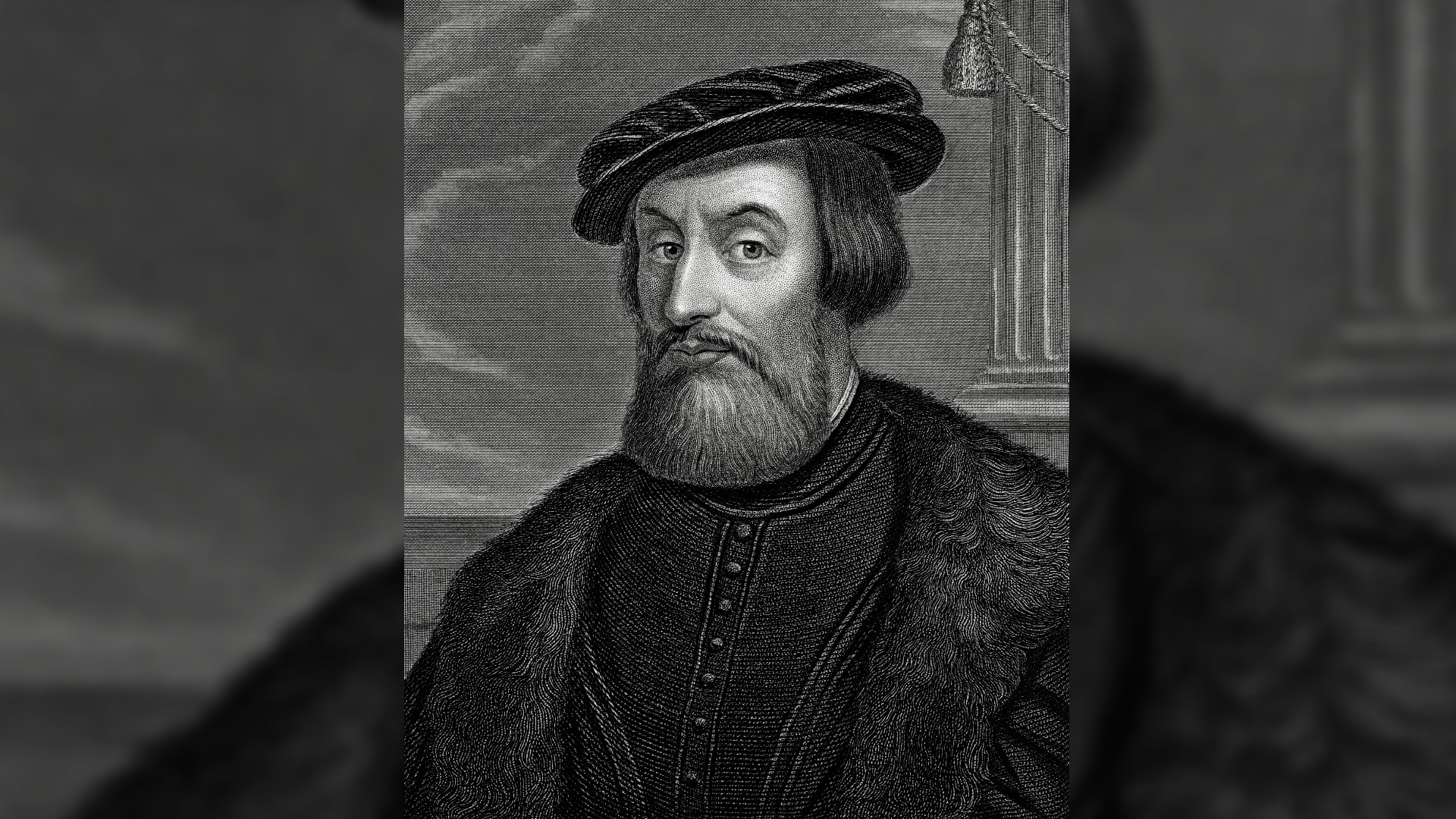
Hernán Cortés was a Spanish conquistador, or conqueror, who is best remembered for conquering the Aztec Empire in 1521 and claiming Mexico for Spain. He also helped colonize Cuba and became a governor of New Spain, a vast area that included large parts of North, Central and South America, as well as several Pacific island archipelagos.
"Like many explorers we know about today, Hernán (also known as Hernando) Cortés's role in the Age of Exploration was influential but controversial," said Erika Cosme, formerly the administrative coordinator of education and digital services at The Mariners' Museum and Park in Newport News, Virginia. "He was a smart, ambitious man who wanted to appropriate new land for the Spanish crown, convert Native inhabitants to Catholicism and plunder the lands for gold and riches."
Early life
Cortés was born in 1485 in Medellín, Spain. He was the only son of noble parents, though his family was not wealthy. He was apparently a clever but difficult child and was the source of much anxiety to his parents, according to Britannica. Cortés' secretary, who wrote a history of Cortés' New World expedition that contained some biographical information, described the conquistador, in general, as ruthless, haughty, mischievous and quarrelsome.
At age 14, Cortés was sent to study law at the University of Salamanca in Spain, but he was unhappy and craved a life of action, so he dropped out after two years. Cortés became fascinated with tales of Christopher Columbus' New World explorations.
Columbus and his expedition members were the first Europeans to see the West Indies when they landed at San Salvador Island in the Bahamas and explored other islands in 1492. Columbus had set sail hoping to find a route to Asia or India. He wanted to profit from and hasten trade for nutmeg, cloves and pomander (a ball of fragrant spices) from the Indonesian "Spice Islands," and pepper and cinnamon from India, which were in high demand, Cosme told Live Science.
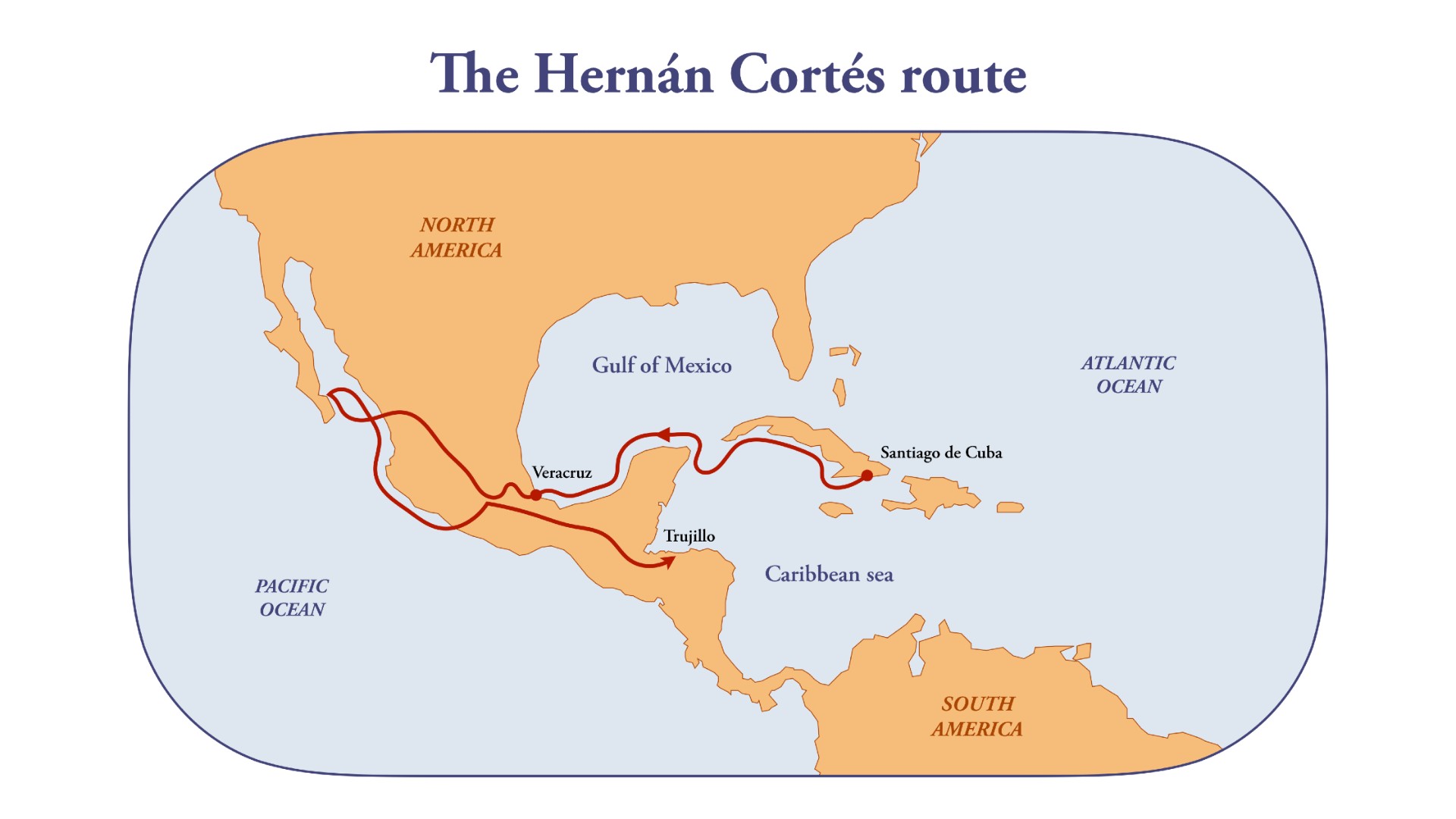
However, Columbus' expedition failed to reach its intended destination and instead stumbled upon the Americas, which were completely unknown to Europeans at the time. (Columbus was initially convinced he'd reached Asia, which is why the region is called the "West Indies," according to Britannica.) Reports of Columbus' journey caused a wave of excitement in Spain and Europe, and several more expeditions set out to explore this "New World" in the following years.
Cortés was eager to be part of the dynamic movement. "For individual explorers, gaining public fame could potentially make them rich," Cosme said. According to the Thought Company, a website that covers history and science, many of these explorers were ambitious men who had been professional soldiers or were mercenaries and often acted on their own initiative rather than seeking funding from the Spanish Crown. Consequently, their expeditions were often privately funded. At the same time, they could not simply decide to mount an expedition without official sanction; they had to seek authorization from colonial officials.
Cortés decided to seek fortune and adventure in Hispaniola (modern-day Dominican Republic and Haiti). In 1504, at age 19, Cortés set sail for the New World.
In the Caribbean
Cortés spent seven years on Hispaniola, living in the town of Azua and working as a notary and farmer. In 1511, he joined Diego Velázquez de Cuéllar's expedition to conquer Cuba, which was occupied by at least two major Native American groups, the Taíno and the Guanahatabey. After the conquest, Cortés served as a clerk to the treasurer and later as mayor of Santiago, a town which had been established after the conquest and served as the island's capital for a brief time until the establishment of Havana in 1515. Cortés' time in Cuba made him wealthy because he was able to buy enslaved people and have them work the land he had acquired. He was able to purchase a house in Santiago and gain considerable influence among the colonists, according to Britannica.
Despite his success, Cortés was hungry for more power. In 1518, he convinced Velázquez, who was by that time the governor of Cuba, to grant him permission to lead an expedition to Mexico, which the Spanish had come into contact with earlier that year. Velázquez appointed Cortés' captain-general of the expedition, according to Britannica, but soon grew increasingly jealous of Cortés' power and influence. Velázquez canceled the voyage at the last minute, but Cortés ignored his orders and set sail with 11 ships and more than 500 men.
Arrival in Mexico
In February 1519, Cortés' ships reached the Mexican coast at Yucatán, which was the domain of Mayan-speaking peoples. The Spanish were eager to settle in the region, and Cortés was also interested in converting Native Americans to Christianity. "His view on the Indigenous people was similar to the majority of Europeans of that day — they were inferior culturally, technologically and religiously," Cosme said. In Cozumel, an island off the Yucatán coast that was one of the first places the Spaniards landed, Cortés learned of various rituals, "including human sacrifice of the Natives to their many gods," Cosme said. "He and his men removed and destroyed the pagan idols, and replaced them with crosses and figures of the Virgin Mary."
Cortés' force then continued sailing west to Tabasco, where it encountered resistance from Native warriors. The Spanish force overpowered them, and the Natives surrendered. Not only did the Spaniards' armaments — steel weapons, arquebuses and crossbows — prove superior in the clash, but so did Cortes' horses. He brought 16 horses along on the expedition; the Indigenous people were not familiar with them and were reportedly terrified of the beasts. Bernal Díaz del Castillo, a soldier who marched with Cortés and later wrote a history of the expedition called "The True History of the Conquest of New Spain," described the Natives' encounter with the horses: "The Indians, who had never seen any horses before, could not think otherwise than that horse and rider were one body. Quite astounded at this to them so novel a sight, they quitted the plain and retreated to a rising ground."
The Natives provided the Europeans with food, supplies and 20 women, including an interpreter called Malintzin (also known as La Malinche or Doña Marina). La Malinche became an important figure in Cortés' life and legacy.
"She became bilingual, speaking Aztec and Mayan languages, which made her very useful to Cortés," Cosme said. "She eventually learned Spanish and became Cortés' personal interpreter, guide and mistress. She actually had a pretty high status for both a woman and a Native during this time and place among the Spaniards."
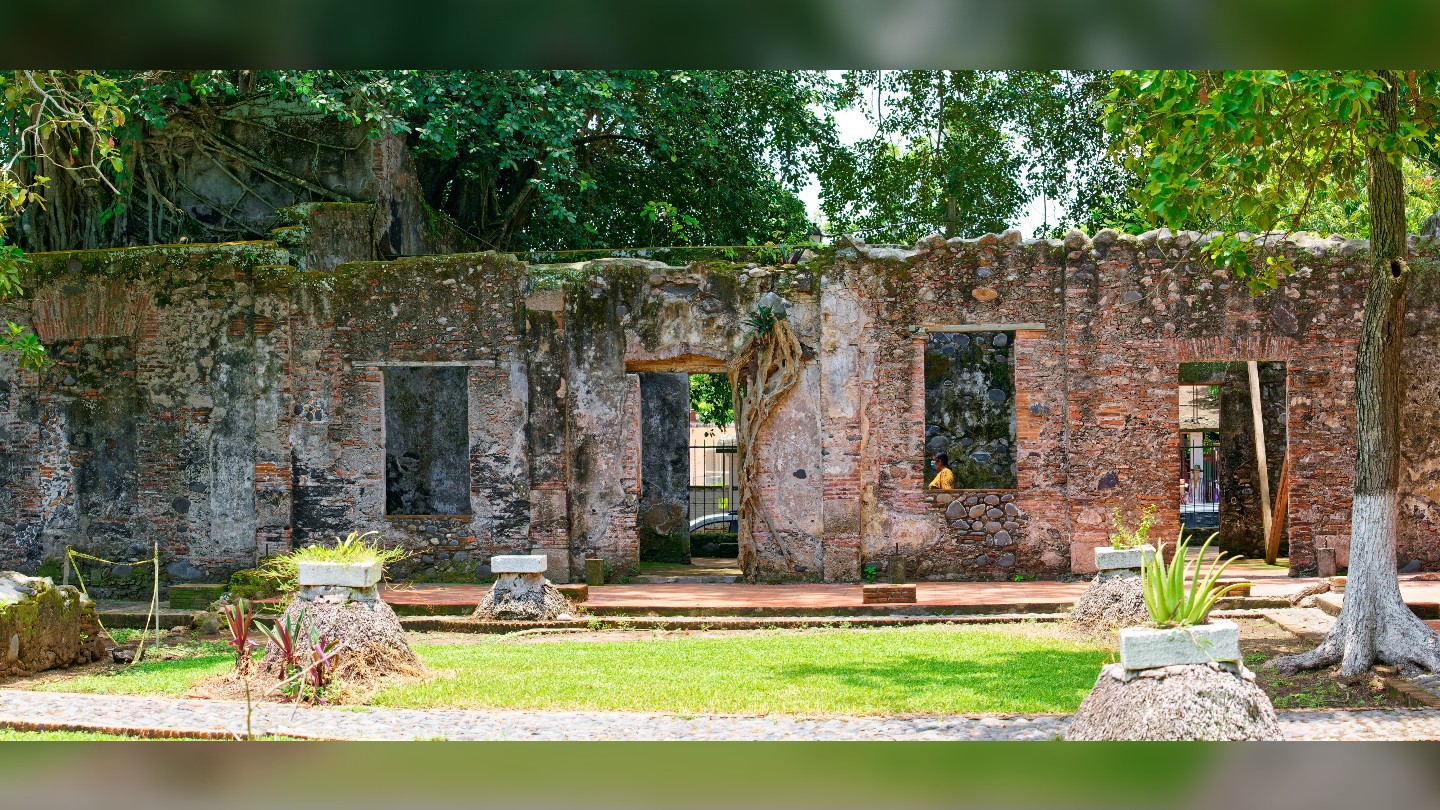
Díaz described La Malinche as "an excellent woman and fine interpreter throughout the wars in New Spain, Tlaxcala and Mexico … This woman was a valuable instrument to us in the conquest of New Spain. It was, through her only, under the protection of the Almighty, that many things were accomplished by us: without her we never should have understood the Mexican language, and, upon the whole, have been unable to surmount many difficulties."
Cortés and La Malinche had a child together named Martín, who is sometimes called "El Mestizo." He was one of the first children of mixed Indigenous and Spanish heritage. Eventually, in 1522, Cortés' Spanish wife, Catalina Suarez, came to Mexico. After her arrival, historians are unsure if Cortés continued to acknowledge La Malinche or Martín, Cosme said. "It would seem his desire to maintain his reputation and standing among the Spanish community was stronger than his need to be a husband and father to Malinche and Martín." Nonetheless, Catalina died under mysterious circumstances soon after arriving, and eventually Cortés took another Spanish wife when he returned briefly to Spain in 1528, according to Britannica.
After a few months in Yucatán, Cortés sailed west again. On the southeastern coast of what is now Mexico, he founded Veracruz, where he dismissed the authority of Velázquez and declared himself under orders from King Charles I of Spain. He disciplined his men and trained them to act as a cohesive unit of soldiers, and prepared them for the long march to Tenochtitlán, the Aztec capital. And in an act that signified his fierce determination, he burned his ships to make retreat impossible, though some scholars have disputed this story.
Díaz related how Cortés exhorted his soldiers on the eve of their long march. "Cortes then adduced many beautiful comparisons from history, and mentioned several heroic deeds of the Romans,” Díaz wrote "We answered him, one and all, that we would implicitly follow his orders, as the die had been cast, and we, with Caesar, when he had passed the Rubicon, had now no choice left; besides which, everything we did was for the glory of God and his majesty the emperor."
Conquering the Aztecs
Cortés had heard of the Aztecs (also known as the Mexica) and knew that they, and their leader Montezuma II (also spelled Moctezuma), were a primary force in Mexico. According to Britannica, the Aztec Empire ruled a large swath of what is today modern Mexico and parts of central America during the 15th and 16th centuries. The Aztecs were accomplished warriors, engineers, artisans and agriculturalists known for creating a thriving society that ruled over a surrounding, often hostile amalgam of various Native Americans with different languages and cultures. Although the Aztecs had been one of many small groups in the Valley of Mexico, they had expanded aggressively during the 15th century by conquering their neighbors, according to World History Encyclopedia. At first, the Aztecs had ruled with the help of two other cities in the region, Texcoco and Tlacopan, a confederation known as the Triple Alliance. Eventually, however, the Aztecs came to dominate the Triple Alliance and ruled alone.
"Cortés arrived in the great Aztec capital of Tenochtitlán [on Nov. 8] in 1519," Cosme said. "Although he was kindly received by the Aztec emperor Montezuma, Cortés' intentions were less benevolent." He set out to rule them.
Tenochtitlan was the religious and political center of the Aztec Empire. It was much larger than many European cities of the time and hosted a population of about 400,000 people, according to Britannica. (By comparison, the city of Paris in the 16th century had an estimated population of 225,000, according to the website Statista.) It had been founded in A.D. 1325 on two small islands in the middle of Lake Texcoco and was connected to the mainland by several broad causeways. In the heart of the city was the temple district, which boasted the Great Temple, or Hueteocalli as the Aztecs called it. This imposing structure, which loomed above the surrounding city, was dedicated to two Aztec gods: Huitzilopochtli, the war god, and Tláloc, the rain god. Other prominent buildings included the pyramid of Tezcatlipoca, a creator god, and the temple of Quetzalcoatl, the "feathered serpent" and the god of art and learning who was associated with the planet Venus.
Díaz described the awe Tenochtitlan inspired among the Spaniards upon arriving: "When we gazed upon all this splendor at once, we scarcely knew what to think, and we doubted whether all that we beheld was real. A series of large towns stretched themselves along the banks of the lake, out of which still larger ones rose magnificently above the waters. Innumerable crowds of canoes were plying everywhere around us; at regular distances we continually passed over new bridges, and before us lay the great city of Mexico in all its splendor."
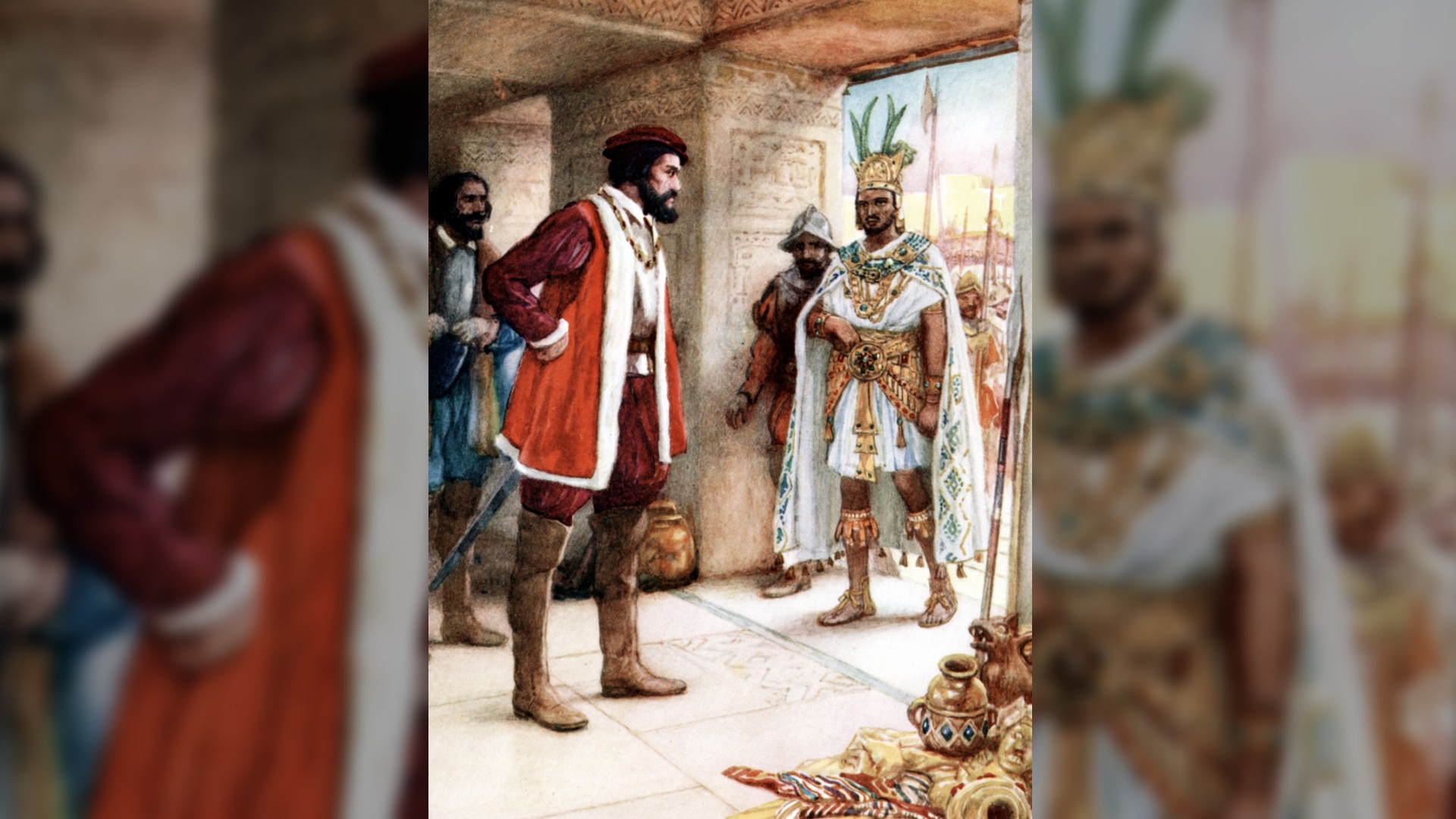
In some accounts, Cortés' arrival coincided with an important Aztec prophecy. The Aztec god Quetzalcoatl was set to return to Earth. In this interpretation, Montezuma was hesitant to confront the Spanish for fear of angering the returned god. However, this interpretation has been disputed by many modern scholars who have argued that it is essentially a myth that was propagated many years after the conquest as a way for Europeans to justify their actions and foster the notion that the Aztecs saw the Spanish as superior.
Montezuma sent out envoys to meet the conquistador as he neared the capital. The Spanish fired shots from their arquebuses and cannons, which stunned the Natives and further intimidated them.
Cortés entered the city, and at first the meeting between the two leaders, though tense, was peaceful. Montezuma gave the conquistador gifts of gold. But things changed quickly. Cortés took Montezuma hostage and sacked the city. La Malinche helped Cortés manipulate Montezuma and rule Tenochtitlán through him. "It is also said that she informed Cortés of an Aztec plot to destroy his army," Cosme said.
The Spanish army had help sacking the city. Though Cortés enslaved much of the Native population, other Indigenous groups were fundamental to his success, according to Cosme. Among them were the people of Tlaxcala, who helped him regroup and take Tenochtitlán. "The Aztecs were not always popular rulers among their subjected cities. When Cortés learned of this, he was able to use this to his advantage," Cosme said. "Xicotencatl, a ruler in the city Tlaxcala, saw an ally in Cortés and an opportunity to destroy the Aztec Empire. They formed an allegiance, and Cortés was given several thousand warriors to add to his ranks. While the Spaniards still had superior weaponry — cannons, guns, swords — the additional knowledge on Aztec fighting styles and defenses given by Xicotencatl, plus the additional men, gave Cortés a helpful edge."
The siege of Tenochtitlán
While Cortés held Tenochtitlán through Montezuma, a Spanish force from Cuba landed on the coast of Mexico in the spring of 1520. It had been sent by Velázquez to unseat Cortés. When Cortés heard of this, he took a force of Spanish and Tlaxcalan soldiers and marched on the new Spanish force, according to World History Encyclopedia. Cortés defeated the Spanish force, but when he returned to Tenochtitlán he found the Aztecs had launched a major attack on the Spanish garrison.
At first, Cortés tried to quell the attack by forcing Montezuma to address the Aztec forces that had gathered. But, by now, the Aztecs were distrustful of their king. In an event that is still debated by scholars, Montezuma was killed. It is unclear whether he was killed by his own forces — some accounts have him being stoned by his warriors — or by the Spanish, according to the Thought Company. In the Aztec accounts, Montezuma survives the attack by his warriors but is later strangled to death by the Spanish.
Cortés and his men fled the city. But their retreat was costly and they suffered significant losses, including most of the plunder they had stolen from the city.
However, the Spanish were there long enough to start a smallpox epidemic in Tenochtitlán. One of Cortés' men contracted smallpox from a member of the force from Cuba. That soldier died during the Aztec rebellion, and when his body was looted, an Aztec caught the disease, which spread like wildfire because the Aztec people had no immunity to it, according to History.com. Between one-quarter and one-half of the inhabitants of the Valley of Mexico, including Aztecs and other Native Americans, succumbed to the disease, according to Suzanne Alchon, a historian and author of the book A Pest in the Land, New World Epidemics in a Global Perspective (University of New Mexico Press, 2003).
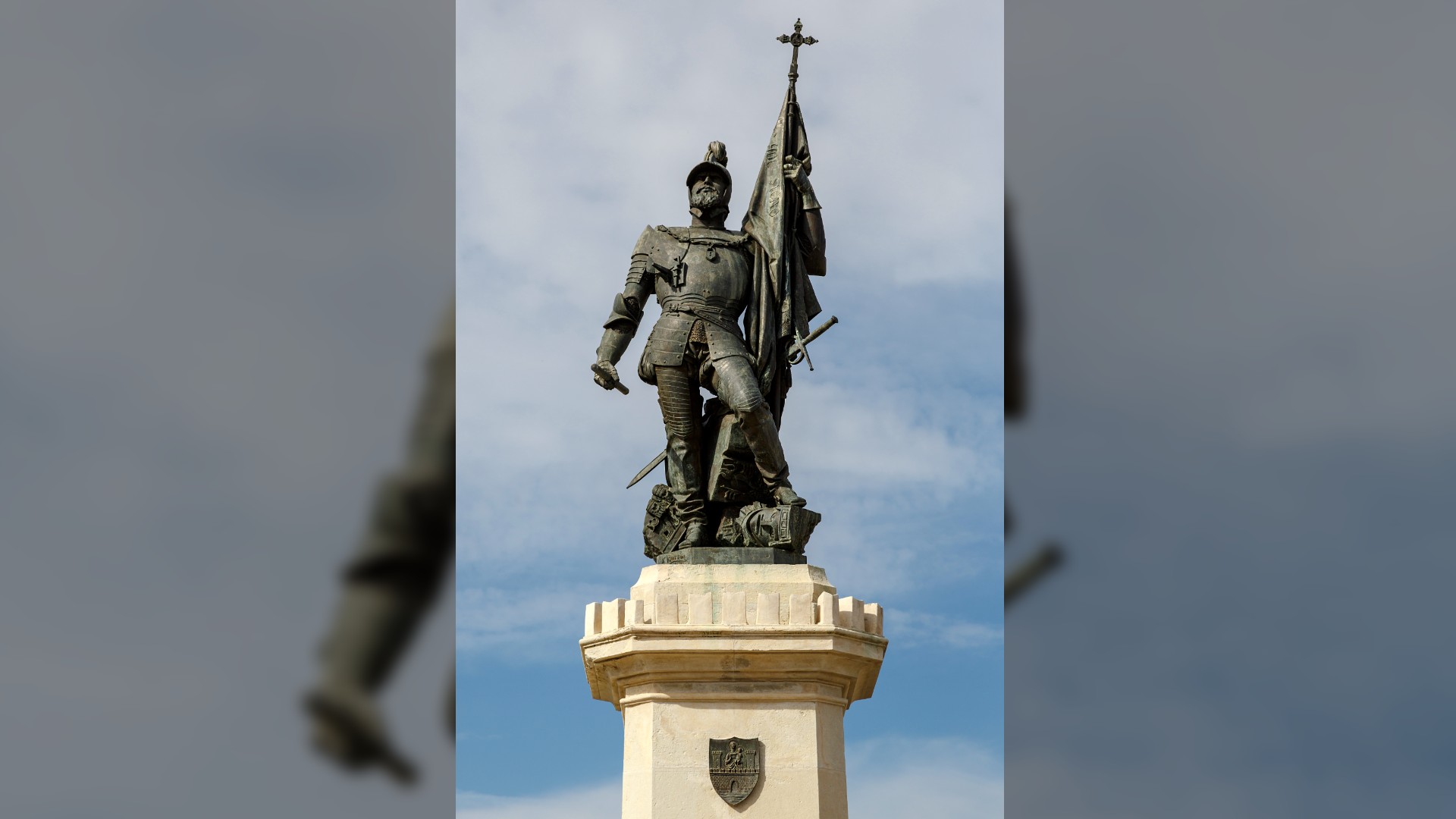
With help from the people of Tlaxcala, Cortés' army regrouped and returned to Tenochtitlán on June 25, 1520. They found that the city's society had crumbled. Nonetheless, the Aztec warriors, under their new leader Cuauhtemoc, resisted the Spanish and a long siege ensued. Finally, after 93 days of siege, the Aztecs, weakened by disease, hunger and having incurred significant losses following many pitched battles, surrendered, according to World History Encyclopedia. This surrender unleashed a storm of violence, looting, rape and carnage as the Spanish and their Tlaxacalan allies descended on the city.
Once the city fell, Cortés began building Mexico City on the ruins. It quickly became a pre-eminent city in the Spanish colonies, and many Europeans came to live there. To reward his success, King Charles I of Spain appointed Cortés governor of New Spain.
The conquest of Mexico by the Spanish ended in 1525, though some Aztecs and their allies continued to resist the Spanish according to World History Encyclopedia. Nonetheless, the change to Spanish rule had massive and long-lasting consequences. Many of the Indigenous people were now forced into the role of subservience and a new, almost caste-like social order was created with the Spanish occupying the highest positions of power and the Indigenous people the lowest. This social dynamic would characterize Mexico for centuries.
Later years
In 1524, Cortés organized an expedition to Honduras, a part of central America that had not yet been conquered by the Spanish. He stayed for two years, establishing a city and appointing a governor, but when he returned to Mexico, he found that the allies he had left in Mexico City had turned against him, according to Britannica. He found himself removed from power, and accused of illegally enriching himself. Cortés traveled to Spain to plead with the king, but he was never again appointed to governorship. In Spain, he married for a second time, to a Spanish noblewoman named Dona Juana de Zuniga, a union that produced three children.
The king did allow him to return to Mexico, albeit with much less authority. Cortés explored the northern part of Mexico and discovered Baja California for Spain in the late 1530s. In 1540, he retired to Spain and spent much of his last years seeking recognition and rewards for his achievements.
Frustrated and embittered, Cortés decided to return to Mexico. Before he could go, however, he died in 1547 of pleurisy, an inflammation of the tissues that line the lungs and chest cavity.
Legacy
Cortés is a controversial figure, especially in Mexico, because of his treatment of Natives. Unfortunately, "when it came to the Indigenous people, Cortés was not unique in his treatment and mindset," Cosme said. "He enslaved much of the Native population, and many of the Indigenous people were wiped out from European diseases such as smallpox. Both scenarios would unfortunately become a common theme among many explorers' interactions with Natives."
Nevertheless, Cortés was important in reshaping the world. "Cortés' victory secured new and profitable land and opportunities for the Spanish monarch. He helped oversee the building of Mexico City, which is still Mexico's capital today," Cosme said. "He opened the door for further exploration and conquest of Central America to the south, and eventually led to the acquisition of California toward the north."
Originally published on Live Science on Sept. 28, 2017 and updated on July 5, 2022.
Sign up for the Live Science daily newsletter now
Get the world’s most fascinating discoveries delivered straight to your inbox.
Jessie Szalay is a contributing writer to FSR Magazine. Prior to writing for Live Science, she was an editor at Living Social. She holds an MFA in nonfiction writing from George Mason University and a bachelor's degree in sociology from Kenyon College.










